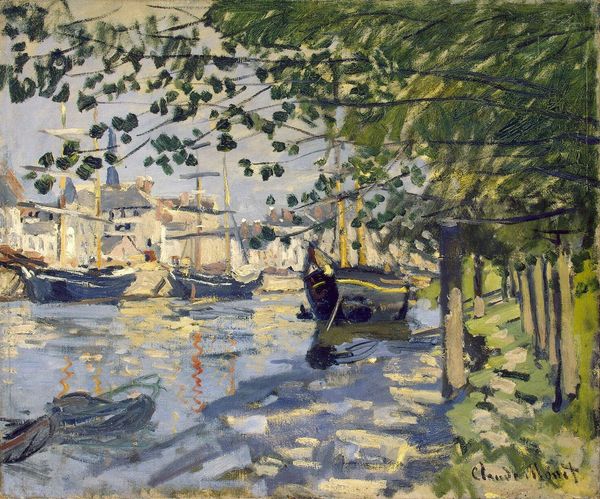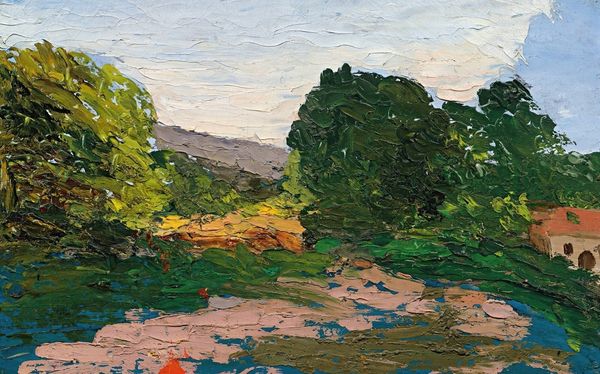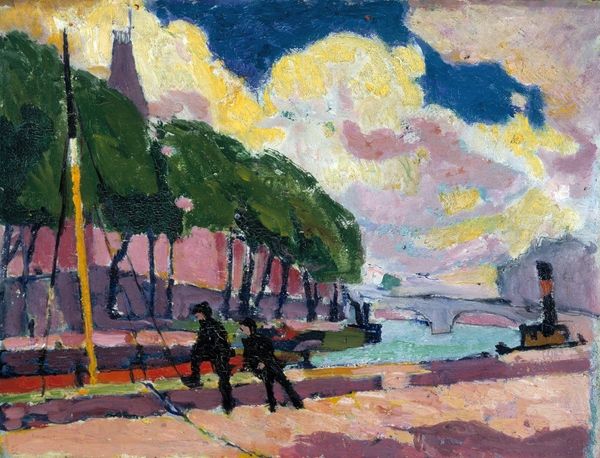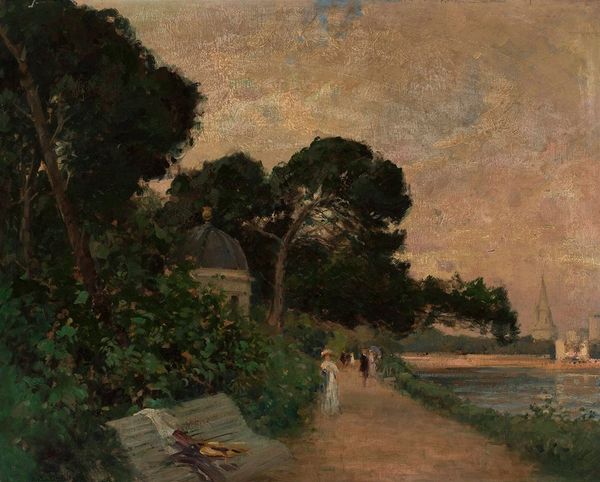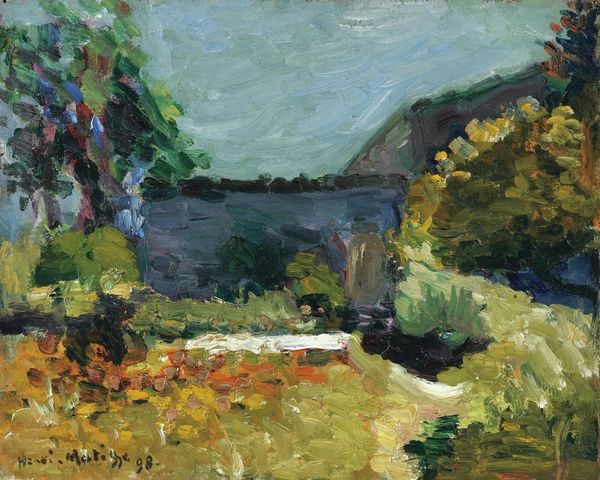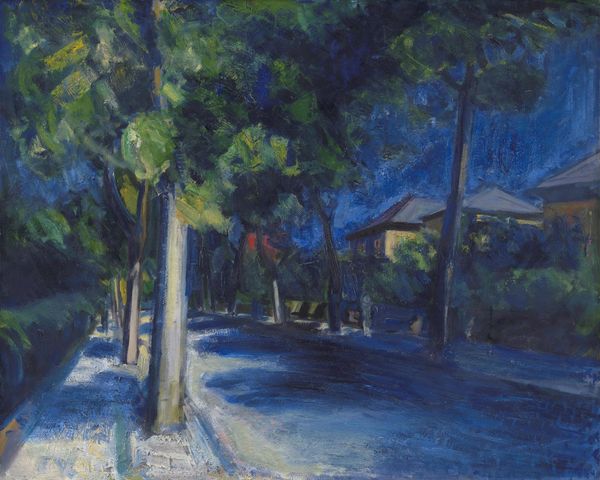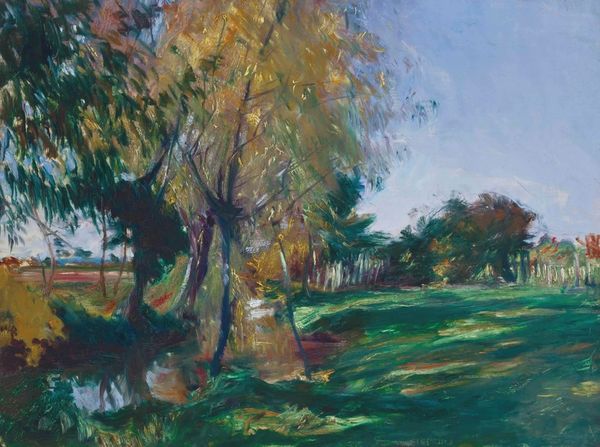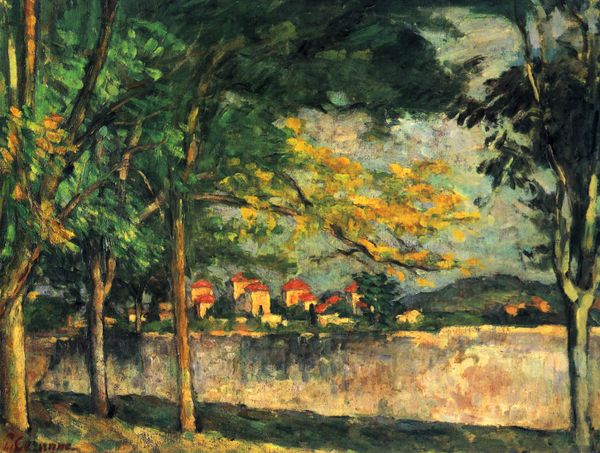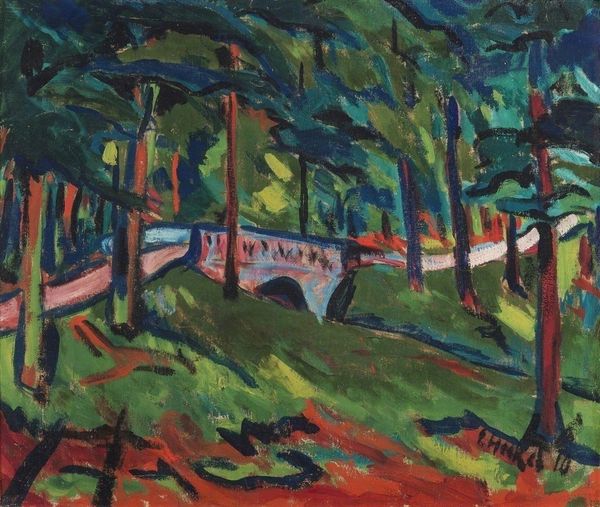
Copyright: Public domain
Editor: Here we have Kandinsky's "Park of St. Cloud," painted in 1906. The oil paint is applied so thickly, almost sculpted onto the canvas! I'm immediately struck by the contrast between the darker trees and that bright, sunlit path. What jumps out at you? Curator: Precisely. Note how Kandinsky abandons strict representation in favour of gestural marks and vibrant color. The materiality of the paint itself becomes the subject. The visible brushstrokes articulate form, light, and the artist’s subjective experience. Consider how the composition invites the viewer into the park. Are we participants, observers, or both? Editor: I hadn’t thought of the paint itself as the subject, but you're right. It's less about depicting a park realistically, and more about the *feeling* of being in that space through colour and texture. Is the lack of precise form typical of Kandinsky at this stage? Curator: Indeed. "Park of St. Cloud" prefigures his later abstract explorations. Observe the dynamic tension between representation and abstraction; trees and paths are discernible, yet dissolve into fields of pure colour. The artist is seeking the spiritual in the material, the emotive power of colour, the structured chaos that gives energy. Editor: It's interesting how he balances the recognisable elements with these almost abstract bursts of color. It's a lot more considered than it initially seemed! Curator: Consider also the spatial relationships constructed through color. Darker colors are weighted in a certain relation to lighter colors to allow our viewing eye to bounce back from the vanishing point, suggesting movement. Do you note that as well? Editor: Absolutely! I do now. This has really deepened my appreciation for Kandinsky’s early work and helped me consider his formal techniques. Curator: Excellent. Looking closer at structure helps us understand this painting as more than just a picture, but as an experiment with form, colour, and composition, with emotion being the most profound.
Comments
No comments
Be the first to comment and join the conversation on the ultimate creative platform.
